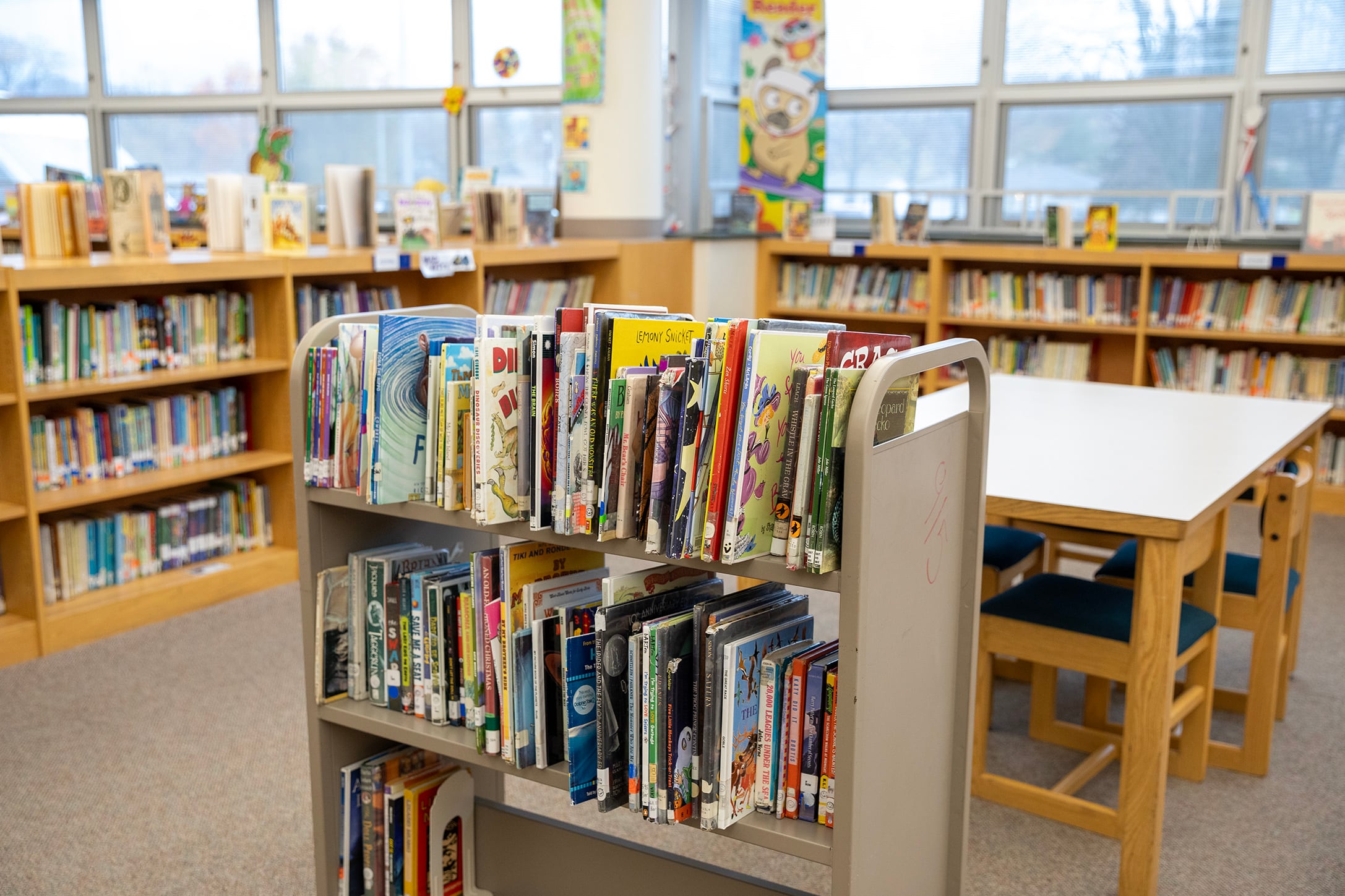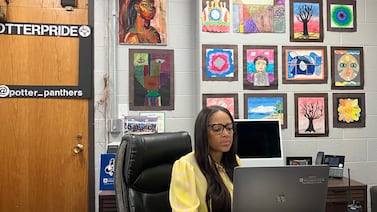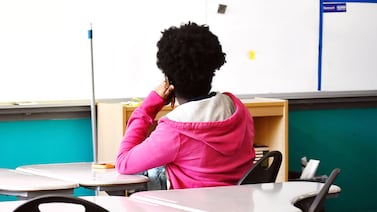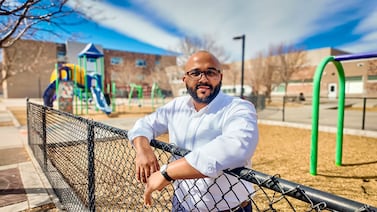Sign up for Chalkbeat New York’s free daily newsletter to keep up with NYC’s public schools.
A new bill introduced to City Council on Thursday would require the city’s Education Department to report annual figures on the number of school librarians across the public school system.
It’s a step that council members and advocates hope will aid efforts to broaden student access to library services at school. It comes more than a year after Chalkbeat’s reporting found nearly a third of local schools that were required under state law to hire a full-time librarian did not have one listed in their recent budget.
The nation’s largest school system — home to more than 1,600 schools — had just 260 certified school librarians last year, Education Department officials said at the time.
As of this fall, roughly 550 schools are staffed with a combination of certified school librarians or teachers assigned to the library, according to Education Department officials.
Brooklyn Council members Lincoln Restler and Rita Joseph, who chairs the council’s Education Committee, introduced the new legislation on Thursday.
If passed, the Education Department would be required to issue an annual report on the number of certified and non-certified librarians in the school system — as well as tracking an array of statistics that could help paint a clearer picture of which school communities are missing out on library services.
“With that data, we can develop better policy solutions to ensure that more librarians are present where they’re needed most,” Restler said. “I hope that the Department of Education will embrace a deeper investment in librarians in the places where we are most focused on improving our literacy outcomes.”
Other data points that would be required in the yearly reports include the number of students with weekly scheduled class time with school librarians, the average amount of weekly class time students spend with librarians, and the number of school libraries overall. That data would need to be disaggregated by grade level, ZIP code, school district, and borough — offering a more detailed understanding of the state of school librarians across different communities.
Jenny Fox, a Brooklyn parent who began advocating for more school librarians after discovering her son’s elementary school had lost its part-time librarian, said publicly available data is critical for securing more investments in school library services.
“If the city keeps the numbers in the shadows, then they keep the problem in the shadows,” said Fox, who co-founded the Librarians = Literacy campaign to push for certified librarians and libraries in all of the city’s public schools. “If they report on the actual numbers, I think it would be shocking to people, and the true extent of the problem would be laid bare.”
Nicole Brownstein, a spokesperson for the city’s Education Department, said the department was still reviewing the legislation, but highlighted the city’s efforts to expand the school librarian pipeline — like the “Teacher2Librarian” program, which partners with universities to help licensed teachers earn a master’s degree in library and information science and become state certified to work as a school librarian.
“Libraries don’t just support a student’s literacy development — they’re also critical resources in helping young people learn about who they are and discover new people, places, and events outside of their communities,” she said in a statement.
School librarians needed amid literacy push, council members say
Restler, who credits his own childhood librarian with instilling in him a lifelong love of reading, said the need for more library services is particularly significant for elementary schools in low-income communities.
In recent years, Mayor Eric Adams and former schools Chancellor David Banks focused on overhauling reading curriculums in the city’s elementary schools, hoping to boost literacy rates by mandating schools use one of three approved curriculums. But library advocates argue that efforts to improve literacy rates are undercut by the city’s low number of librarians.
“If we’re committed to advancing literacy — and that has been the number one priority of the Adams administration and DOE — then we need to invest in librarians,” Restler said.
Under current state requirements, certified librarians are only required at middle and high schools — with a full-time librarian mandated at schools with more than 700 students, and a part-time librarian required at those that fall below that threshold. But as of May last year, a Chalkbeat analysis found many schools in the city didn’t appear to be meeting that requirement.
Studies have shown students at schools with certified librarians on staff tend to perform better on measures of academic achievement, and advocates stress they help students develop skills in research, media, and digital literacy, and other areas important for post-secondary success.
But despite these benefits, library advocates say many schools have opted to cut school librarians when faced with difficult budgetary decisions.
“Our schools are underfunded, and principals have to make painful decisions about where to make cuts,” Restler said. “Arts and librarian staff members have unfortunately been too often on the chopping block, and we’ve seen a steady decline in the number of librarians in our schools over many years.”
Kyra Wolfe, secretary of the New York City School Librarians’ Association, said her organization has been working to raise public awareness about the critical role that librarians play in a school community.
Certified librarians help ensure that book collections are updated, culturally responsive to students, and age-appropriate, she said. In addition to helping students learn digital and media literacy skills, school librarians coordinate with teachers, hold events, and provide kids with a needed “third space” at school, Wolfe added.
“In many schools, it’s a place where students have freedom to explore,” she said. “There’s computers, and there’s books that no one’s telling them to read, but that they can choose to read.”
And with an increase in book challenges nationwide, Wolfe added school librarians can act as a line of defense against efforts to restrict student access to books that deal with topics of race, gender, and sexuality.
Still, as many schools go without, advocates say some communities have seen their school libraries devolve into spaces for staff meetings or even storage — rarely being used by students.
“There’s nothing sadder than a library that’s closed,” Restler said. “Every kid deserves to have that same opportunity to fall in love with reading.”
Julian Shen-Berro is a reporter covering New York City. Contact him at jshen-berro@chalkbeat.org.







